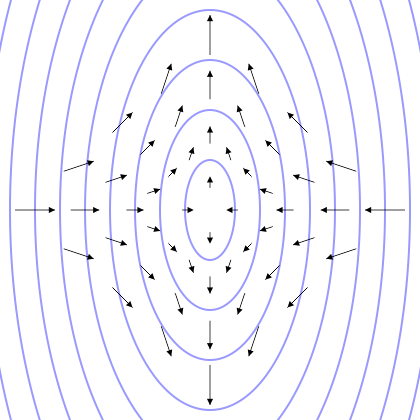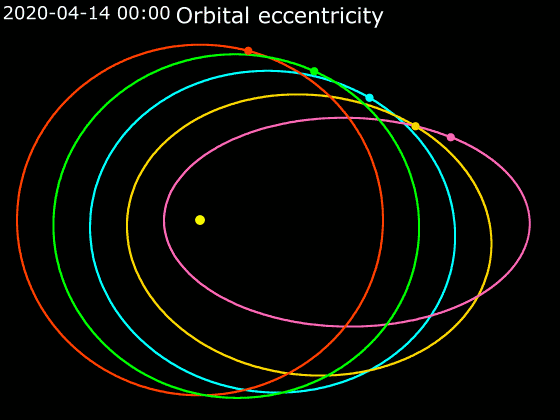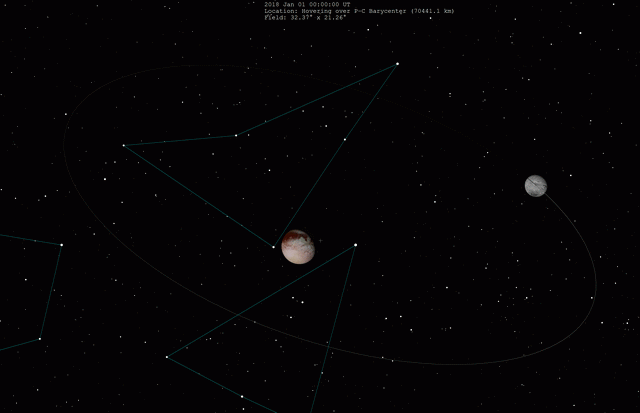|
Hulse–Taylor Pulsar
The Hulse–Taylor pulsar (known as PSR B1913+16, PSR J1915+1606 or PSR 1913+16) is a binary star system composed of a neutron star and a pulsar which orbit around their common center of mass. It is the first binary pulsar ever discovered. The pulsar was discovered by Russell Alan Hulse and Joseph Hooton Taylor Jr., of the University of Massachusetts Amherst in 1974. Their discovery of the system and analysis of it earned them the 1993 Nobel Prize in Physics "for the discovery of a new type of pulsar, a discovery that has opened up new possibilities for the study of gravitation." Discovery Using the Arecibo 305 m dish, Hulse and Taylor detected pulsed radio emissions and thus identified the source as a pulsar, a rapidly rotating, highly magnetized neutron star. The neutron star rotates on its axis 17 times per second; thus the pulse period is 59 milliseconds. After timing the radio pulses for some time, Hulse and Taylor noticed that there was a systematic variation in ... [...More Info...] [...Related Items...] OR: [Wikipedia] [Google] [Baidu] |
B1950
In astronomy, an equinox is either of two places on the celestial sphere at which the ecliptic intersects the celestial equator. Although there are two such intersections, the equinox associated with the Sun's ascending node is used as the conventional origin of celestial coordinate systems and referred to simply as "the equinox". In contrast to the common usage of spring/vernal and autumnal equinoxes, the celestial coordinate system equinox is a direction in space rather than a moment in time. In a cycle of about 25,800 years, the equinox moves westward with respect to the celestial sphere because of perturbing forces; therefore, in order to define a coordinate system, it is necessary to specify the date for which the equinox is chosen. This date should not be confused with the epoch. Astronomical objects show real movements such as orbital and proper motions, and the epoch defines the date for which the position of an object applies. Therefore, a complete specification of ... [...More Info...] [...Related Items...] OR: [Wikipedia] [Google] [Baidu] |
Nobel Prize In Physics
The Nobel Prize in Physics () is an annual award given by the Royal Swedish Academy of Sciences for those who have made the most outstanding contributions to mankind in the field of physics. It is one of the five Nobel Prizes established by the will of Alfred Nobel in 1895 and awarded since 1901, the others being the Nobel Prize in Chemistry, Nobel Prize in Literature, Nobel Peace Prize, and Nobel Prize in Physiology or Medicine. Physics is traditionally the first award presented in the Nobel Prize ceremony. The prize consists of a medal along with a diploma and a certificate for the monetary award. The front side of the medal displays the same profile of Alfred Nobel depicted on the medals for Physics, Chemistry, and Literature. The first Nobel Prize in Physics was awarded to German physicist Wilhelm Röntgen in recognition of the extraordinary services he rendered by the discovery of X-rays. This award is administered by the Nobel Foundation and is widely regarded as the ... [...More Info...] [...Related Items...] OR: [Wikipedia] [Google] [Baidu] |
Albert Einstein
Albert Einstein (14 March 187918 April 1955) was a German-born theoretical physicist who is best known for developing the theory of relativity. Einstein also made important contributions to quantum mechanics. His mass–energy equivalence formula , which arises from special relativity, has been called "the world's most famous equation". He received the 1921 Nobel Prize in Physics for . Born in the German Empire, Einstein moved to Switzerland in 1895, forsaking his German citizenship (as a subject of the Kingdom of Württemberg) the following year. In 1897, at the age of seventeen, he enrolled in the mathematics and physics teaching diploma program at the Swiss ETH Zurich, federal polytechnic school in Zurich, graduating in 1900. He acquired Swiss citizenship a year later, which he kept for the rest of his life, and afterwards secured a permanent position at the Swiss Patent Office in Bern. In 1905, he submitted a successful PhD dissertation to the University of Zurich. In 19 ... [...More Info...] [...Related Items...] OR: [Wikipedia] [Google] [Baidu] |
Gravitational Wave
Gravitational waves are oscillations of the gravitational field that Wave propagation, travel through space at the speed of light; they are generated by the relative motion of gravity, gravitating masses. They were proposed by Oliver Heaviside in 1893 and then later by Henri Poincaré in 1905 as the gravitational equivalent of Electromagnetic radiation, electromagnetic waves. In 1916, Albert Einstein demonstrated that gravitational waves result from his general theory of relativity as ripples in spacetime. Gravitational waves transport energy as gravitational radiation, a form of radiant energy similar to electromagnetic radiation. Newton's law of universal gravitation, part of classical mechanics, does not provide for their existence, instead asserting that gravity has instantaneous effect everywhere. Gravitational waves therefore stand as an important relativistic phenomenon that is absent from Newtonian physics. Gravitational-wave astronomy has the advantage that, unlike elec ... [...More Info...] [...Related Items...] OR: [Wikipedia] [Google] [Baidu] |
Apastron
An apsis (; ) is the farthest or nearest point in the orbit of a planetary body about its primary body. The line of apsides (also called apse line, or major axis of the orbit) is the line connecting the two extreme values. Apsides pertaining to orbits around different bodies have distinct names to differentiate themselves from other apsides. Apsides pertaining to geocentric orbits, orbits around the Earth, are at the farthest point called the ''apogee'', and at the nearest point the ''perigee'', like with orbits of satellites and the Moon around Earth. Apsides pertaining to orbits around the Sun are named ''aphelion'' for the farthest and ''perihelion'' for the nearest point in a heliocentric orbit. Earth's two apsides are the farthest point, ''aphelion'', and the nearest point, ''perihelion'', of its orbit around the host Sun. The terms ''aphelion'' and ''perihelion'' apply in the same way to the orbits of Jupiter and the other planets, the comets, and the asteroids of t ... [...More Info...] [...Related Items...] OR: [Wikipedia] [Google] [Baidu] |
Solar Radii
Solar may refer to: Astronomy * Of or relating to the Sun ** Solar telescope, a special purpose telescope used to observe the Sun ** A device that utilizes solar energy (e.g. "solar panels") ** Solar calendar, a calendar whose dates indicate the position of the Earth on its revolution around the Sun ** Solar eclipse, an eclipse of a sun in which it is obstructed by the moon ** Solar System, the planetary system made up by the Sun and the objects orbiting it * Solar Maximum Mission, a satellite * SOLAR (ISS), an observatory on International Space Station Music * "Solar" (composition), attributed to Miles Davis * ''Solar'' (Red Garland album), 1962 * ''Solar'' (Taeyang album), 2010 * ''Solar'', a 2011 album by Rubik * "Solar", a song by Northlane from '' Mesmer'', 2017 * "Solar", a song by Sault from '' Air'', 2022 * ”Solar”, a song by Stam1na from '' Taival'', 2018 * SOLAR Records, a record label Geography * Solar (Spanish term), a type of urban site * Sol ... [...More Info...] [...Related Items...] OR: [Wikipedia] [Google] [Baidu] |
Periastron
An apsis (; ) is the farthest or nearest point in the orbit of a planetary-mass object, planetary body about its primary body. The line of apsides (also called apse line, or major axis of the orbit) is the line connecting the two maximum and minimum, extreme values. Apsides pertaining to orbits around different bodies have distinct names to differentiate themselves from other apsides. Apsides pertaining to geocentric orbits, orbits around the Earth, are at the farthest point called the ''apogee'', and at the nearest point the ''perigee'', like with orbits of satellites and the Moon around Earth. Apsides pertaining to orbits around the Sun are named ''aphelion'' for the farthest and ''perihelion'' for the nearest point in a heliocentric orbit. Earth's two apsides are the farthest point, ''aphelion'', and the nearest point, ''perihelion'', of its orbit around the host Sun. The terms ''aphelion'' and ''perihelion'' apply in the same way to the orbits of Jupiter and the other p ... [...More Info...] [...Related Items...] OR: [Wikipedia] [Google] [Baidu] |
Solar Mass
The solar mass () is a frequently used unit of mass in astronomy, equal to approximately . It is approximately equal to the mass of the Sun. It is often used to indicate the masses of other stars, as well as stellar clusters, nebulae, galaxies and black holes. More precisely, the mass of the Sun is The solar mass is about times the mass of Earth (), or times the mass of Jupiter (). History of measurement The value of the gravitational constant was first derived from measurements that were made by Henry Cavendish in 1798 with a torsion balance. The value he obtained differs by only 1% from the modern value, but was not as precise. The diurnal parallax of the Sun was accurately measured during the transits of Venus in 1761 and 1769, yielding a value of (9 arcseconds, compared to the present value of ). From the value of the diurnal parallax, one can determine the distance to the Sun from the geometry of Earth. The first known estimate of the solar mass was by ... [...More Info...] [...Related Items...] OR: [Wikipedia] [Google] [Baidu] |
Elliptical Orbit
In astrodynamics or celestial mechanics, an elliptical orbit or eccentric orbit is an orbit with an orbital eccentricity, eccentricity of less than 1; this includes the special case of a circular orbit, with eccentricity equal to 0. Some orbits have been referred to as "elongated orbits" if the eccentricity is "high" but that is not an explanatory term. For the simple two body problem, all orbits are ellipses. In a gravitational two-body problem, both bodies follow Similarity (geometry), similar elliptical orbits with the same orbital period around their common barycenter. The relative position of one body with respect to the other also follows an elliptic orbit. Examples of elliptic orbits include Hohmann transfer orbits, Molniya orbits, and tundra orbits. Velocity Under standard assumptions, no other forces acting except two spherically symmetrical bodies (m_1) and (m_2), the orbital speed (v\,) of one body traveling along an elliptical orbit can be computed from the vi ... [...More Info...] [...Related Items...] OR: [Wikipedia] [Google] [Baidu] |
Binary System (astronomy)
A binary system is a system of two astronomical bodies of the same kind that are comparable in size. Definitions vary, but typically require the center of mass to be located outside of either object. (See animated examples.) The most common kinds of binary system are binary stars and binary asteroids, but brown dwarfs, planets, neutron stars, black holes and galaxies can also form binaries. A ''multiple system'' is similar but consists of three or more objects, for example triple stars and triple asteroids (a more common term than 'trinary'). Classification In a binary system, the brighter or more massive object is referred to as primary, and the other the secondary. Binary stars are also classified based on orbit. Wide binaries are objects with orbits that keep them apart from one another. They evolve separately and have very little effect on each other. Close binaries are close to each other and are able to transfer mass from one another. They can also be classifi ... [...More Info...] [...Related Items...] OR: [Wikipedia] [Google] [Baidu] |
Orbital Period
The orbital period (also revolution period) is the amount of time a given astronomical object takes to complete one orbit around another object. In astronomy, it usually applies to planets or asteroids orbiting the Sun, moons orbiting planets, exoplanets orbiting other stars, or binary stars. It may also refer to the time it takes a satellite orbiting a planet or moon to complete one orbit. For celestial objects in general, the orbital period is determined by a 360° revolution of one body around its primary, ''e.g.'' Earth around the Sun. Periods in astronomy are expressed in units of time, usually hours, days, or years. Its reciprocal is the orbital frequency, a kind of revolution frequency, in units of hertz. Small body orbiting a central body According to Kepler's Third Law, the orbital period ''T'' of two point masses orbiting each other in a circular or elliptic orbit is: :T = 2\pi\sqrt where: * ''a'' is the orbit's semi-major axis * ''G'' is the gravitationa ... [...More Info...] [...Related Items...] OR: [Wikipedia] [Google] [Baidu] |
Millisecond
A millisecond (from '' milli-'' and second; symbol: ms) is a unit of time in the International System of Units equal to one thousandth (0.001 or 10−3 or 1/1000) of a second or 1000 microseconds. A millisecond is to one second, as one second is to approximately 16.67 minutes. A unit of 10 milliseconds may be called a centisecond, and one of 100 milliseconds a decisecond, but these names are rarely used. To help compare orders of magnitude of different times, this page lists times between 10−3 seconds and 100 seconds (1 millisecond and one second). ''See also'' times of other orders of magnitude. Examples The Apollo Guidance Computer used metric units internally, with centiseconds used for time calculation and measurement. *1 millisecond (1 ms) – cycle time for frequency 1 kHz; duration of light for typical photo flash strobe; time taken for sound wave to travel about 34 cm; repetition interval of GPS C/A PN code *1 millisecond – time taken ... [...More Info...] [...Related Items...] OR: [Wikipedia] [Google] [Baidu] |






